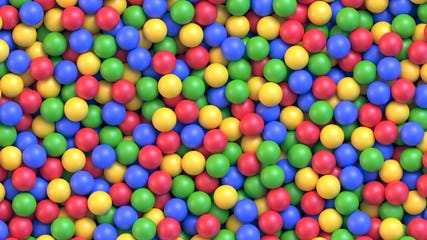A Quick Guide to Finding the Heaviest Ball Using Weighing
Written on
Chapter 1: Introduction to the Weighing Problem
The quest for discovering something can be just as captivating as the discovery itself. — Paulo Coelho
In earlier discussions, I shared some fascinating algorithms related to quick checks. Today, let's delve deeper into this subject.
Consider this challenge:
You have 27 balls, with one being slightly heavier than the rest. Using a balance scale that permits three weighings, how do we identify the unique heavier ball?
Before proceeding, take a moment to jot down your thoughts or strategies!

Chapter 2: The Experimental Approach
To tackle this, let’s utilize a straightforward experimental method:
Section 2.1: Step-by-Step Weighing Process
Step 1: Split the 27 balls into three groups, each containing 9 balls. Place any two groups on the balance. If they balance, the heavier ball is in the third group. If they don't, it’s in the heavier group.
Step 2: Take the identified heavier group of 9 and divide it into three subgroups of 3 balls each. Again, weigh two of these groups. The heavier group contains the heavier ball.
Step 3: From the group that has the heavy ball, separate the three balls into individual groups of one. Weigh any two. If they balance, the heavier ball is the one not weighed; if not, it’s in the heavier group.
Thus, with just three weighings, we can pinpoint the heavier ball.
Section 2.2: Considering Binary Search
But wait…
Do you recall the binary search technique discussed in my previous blog? Can it assist in solving this problem?
Absolutely! The only alteration is that we will use a ternary method instead.
Subsection 2.2.1: Ternary Numbering
Let’s label the 27 balls in a ternary format, numbered from 0 to 26:
000, 001, 002, 010, 011, …, 220, 221, 222
During the first weighing, arrange the 9 balls that begin with the digit '1' on the left side and those starting with '2' on the right.
For the second weighing, place the 9 balls with the second digit as '1' on the left and those with '2' on the right.
In the third weighing, position the 9 balls that have '1' as the third digit on the left and those with '2' on the right.
By analyzing the results of these three weighings, we can identify which ball is heavier. For instance, if the outcomes are 0, 1, and 2 respectively, the heavier ball would be the 21st ball. This is because the ternary representation of 21 is (210): the 21st ball was not weighed in the first round, was placed on the left in the second, and on the right in the third.
Thanks for following along!
Chapter 3: Visual Learning with Videos
To further illustrate the concepts discussed, here are two informative videos:
The first video titled "Algorithms: Binary Search" provides insights into search algorithms and their applications.
The second video, "Binary Search Algorithm - Computerphile," dives deeper into binary search techniques and optimizations.